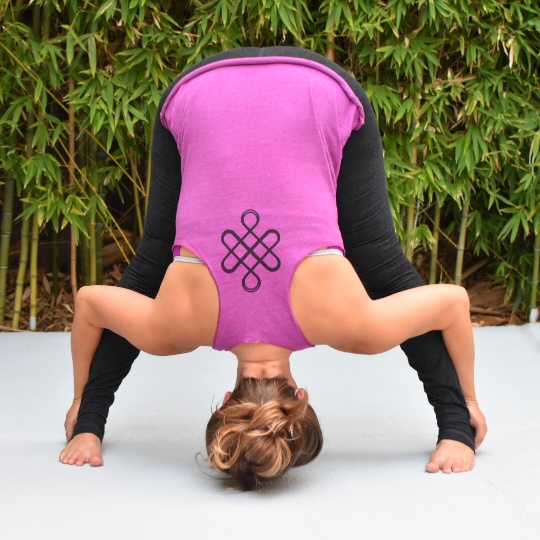Standing Separate Leg Stretching
/This is an active posture. There are some wide-legged forward bends that place an emphasis on stretching the hamstrings, in which case you can hang forward or clasp your hands behind your back to open the shoulders, but in this posture, the hamstrings are just the tip of the iceberg. Pulling on the heels helps move the stretch to the hips and spine as well. Gravity helps quite bit, but it doesn't do the whole job. Pull your body inward towards your legs and also down to lengthen and stretch your spine.
INSTRUCTIONS:
1. Separate your feet about 4-feet apart. Turn your toes in slightly.
2. Keeping your legs straight and knees locked, slowly bend forward from the lower spine.
3. Step on your fingers underneath your heels, holding from the outsides of your feet.
4. Keeping your knees locked, bring the body weight to your toes and pull on your heels to stretch your upper body down. Bend your elbows close to your shins and draw your shoulders away from your ears, lengthen your neck. Think of touching the upper part of your forehead to the floor in between your feet.
5. If you can touch your forehead easily, adjust your feet closer. If you cannot touch, try taking a wider step.
BENEFITS:
- Releases tension in the lower back muscles
- Increases circulation to the brain
- When chin is slightly forward it increases circulation to the adrenal glands
- Good for depression and loss of memory
- Good for hyperacidity
PRECAUTIONS:
- If you have lower back issues, be very careful of forward bending. make sure to engage your abdominal muscles when transitioning in and out of the posture.
- For sciatica, keep the feet parallel rather than turning toes in.
MODIFICATIONS:
- If you can't hold the heels, try for the outsides of your feet.
- If you can't reach your feet, either step wider or keep your legs straight and bring your fingertips to the floor in front of you. Roll the body weight forward.














